Bangkok to Chaiyapum: From Technology to Tigers (Day 1)

AMITIAE - Tuesday 31 March 2015
|
Bangkok to Chaiyapum: From Technology to Tigers (Day 1) |
 |
|
|
By Graham K. Rogers
The start times are never adhered to. The 0730 departure time saw about 5 students on campus, a couple of whom were catching up on sleep. By 0800, many more had arrived, but by the time stragglers appeared and the bags were loaded, it was 0829 when the driver selected a gear and the wheels turned.
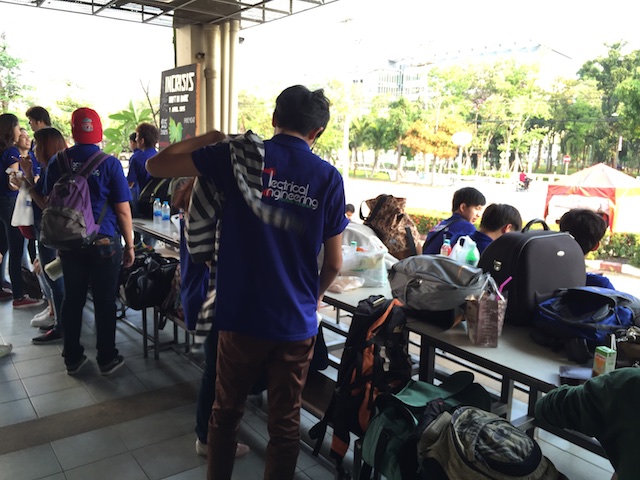
Waiting for the Off
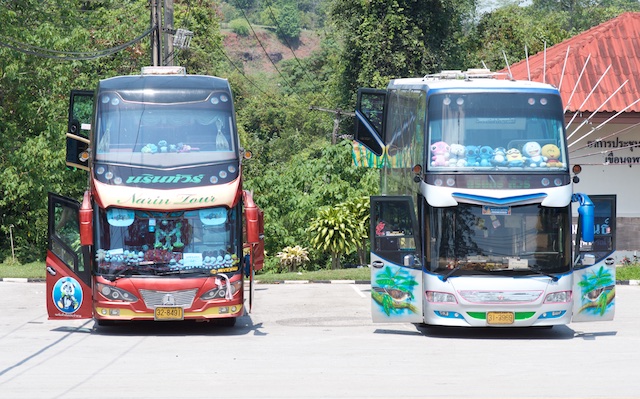
Buses 1 and 2
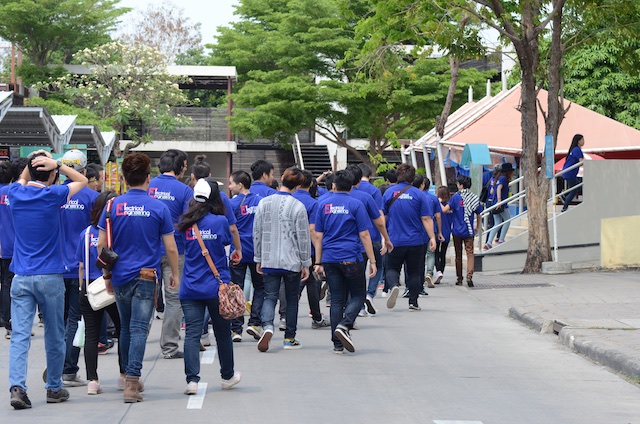
Lunch at Tesco Lotus
The installation is spread over several hectares and produces power for around 12 hours a day when the sun is shining. It uses thin-film PV panels, but unlike other types of installation where these are movable, all the panels here are set at 10 degrees from the horizontal: optimum angle for the location in Lopburi. This means the initial construction of the site is more economical and such an installation can be assembled more quickly.
By this time, we were nearer the dam and turned off the main road (2055) in Nong Phon Ngam and headed into the darkness. The road was so long that I thought at one stage we were lost. The driver stopped in one village and checked with some people, but we continued along the same road for a while longer until I saw a sign for the dam itself. As we were staying at the administration center - quite a way from the dam - we had to continue for several kilometres more before we finally arrived at the gates. While signals had been quite good most of the way up, here in the hills there were places where not only did my iPhone drop back to EDGE, but at times even indicated No Signal; and that was what I saw when we arrived at the accommodation. Not a good sign for someone who relies on technology.
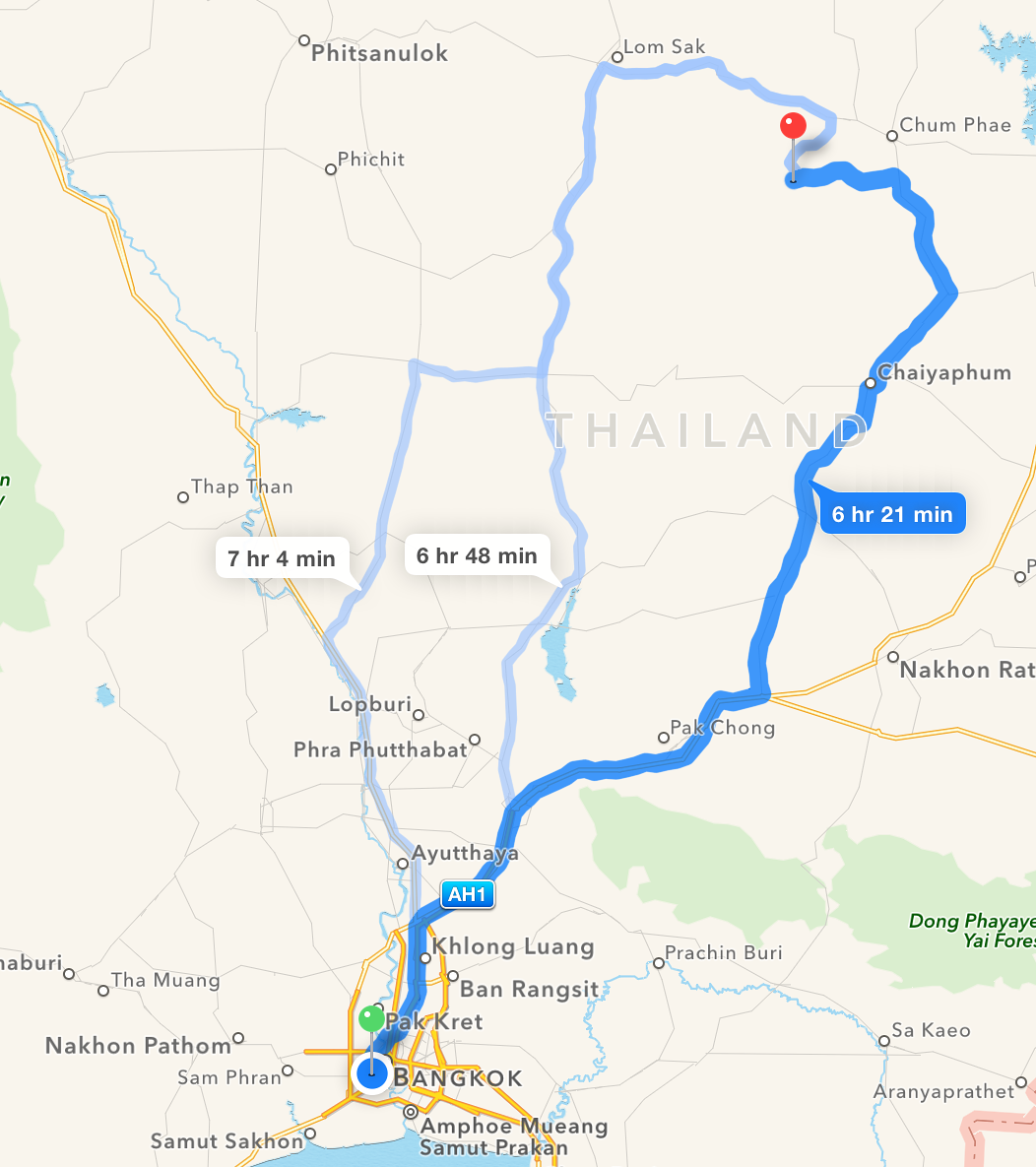
Routes from Bangkok to Chulabhorn Dam
At the rooms, another colleague was already settled in with his family: they had driven up earlier. There were four of us for the three remaining rooms and I prefer to sleep alone. Apart from the point that I snore, I am not a good sleeper. The room had no carrier signal from DTAC, although others in the party with True SIM cards were reporting connections. I showered and headed for bed. Around midnight, I heard the sound of email arriving on the phone, so the signal may have been available but the heavy tree cover outside made it intermittent. I slept quite well, but as we were starting early, woke at 0630 and went to find breakfast. When I went outside, I saw that the rooms we had were right by the lake and the sun was shining.
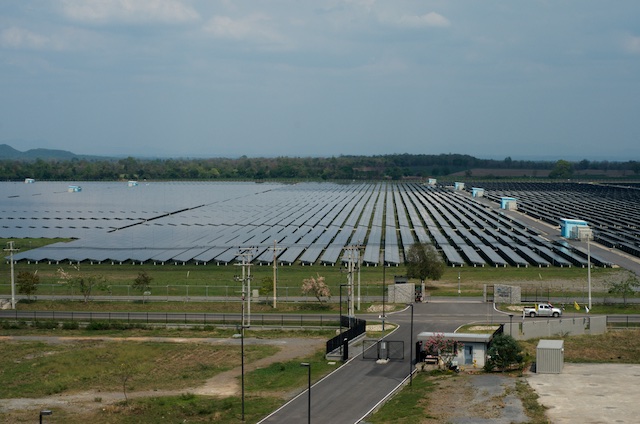
Solar Farm
Coming soon:Bangkok to Chaiyapum: From Technology to Tigers (Day 2)
Graham K. Rogers teaches at the Faculty of Engineering, Mahidol University in Thailand where he is also Assistant Dean. He wrote in the Bangkok Post, Database supplement on IT subjects. For the last seven years of Database he wrote a column on Apple and Macs. He is now continuing that in the Bangkok Post supplement, Life. |
|

For further information, e-mail to
Back to
eXtensions
Back to
Home Page